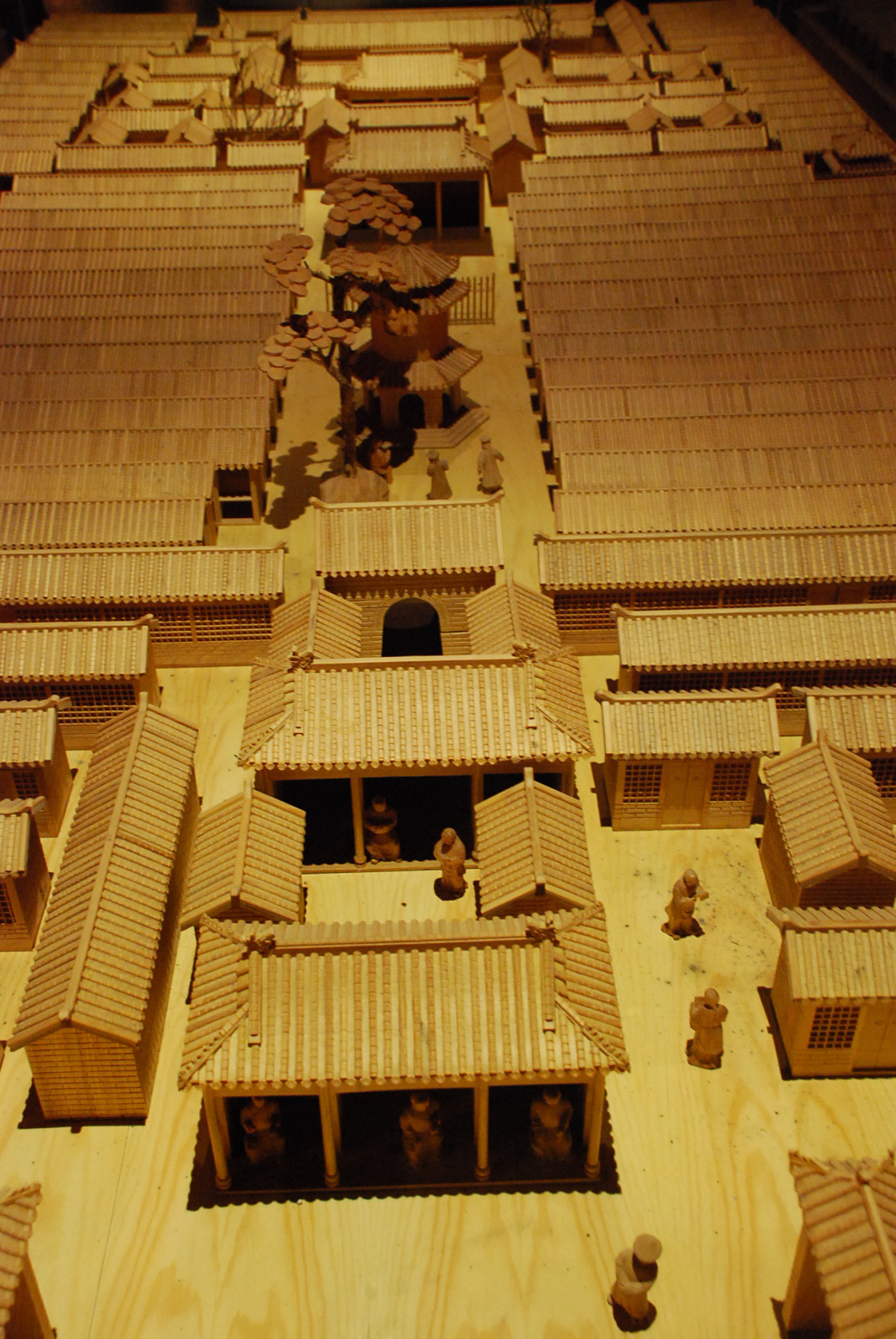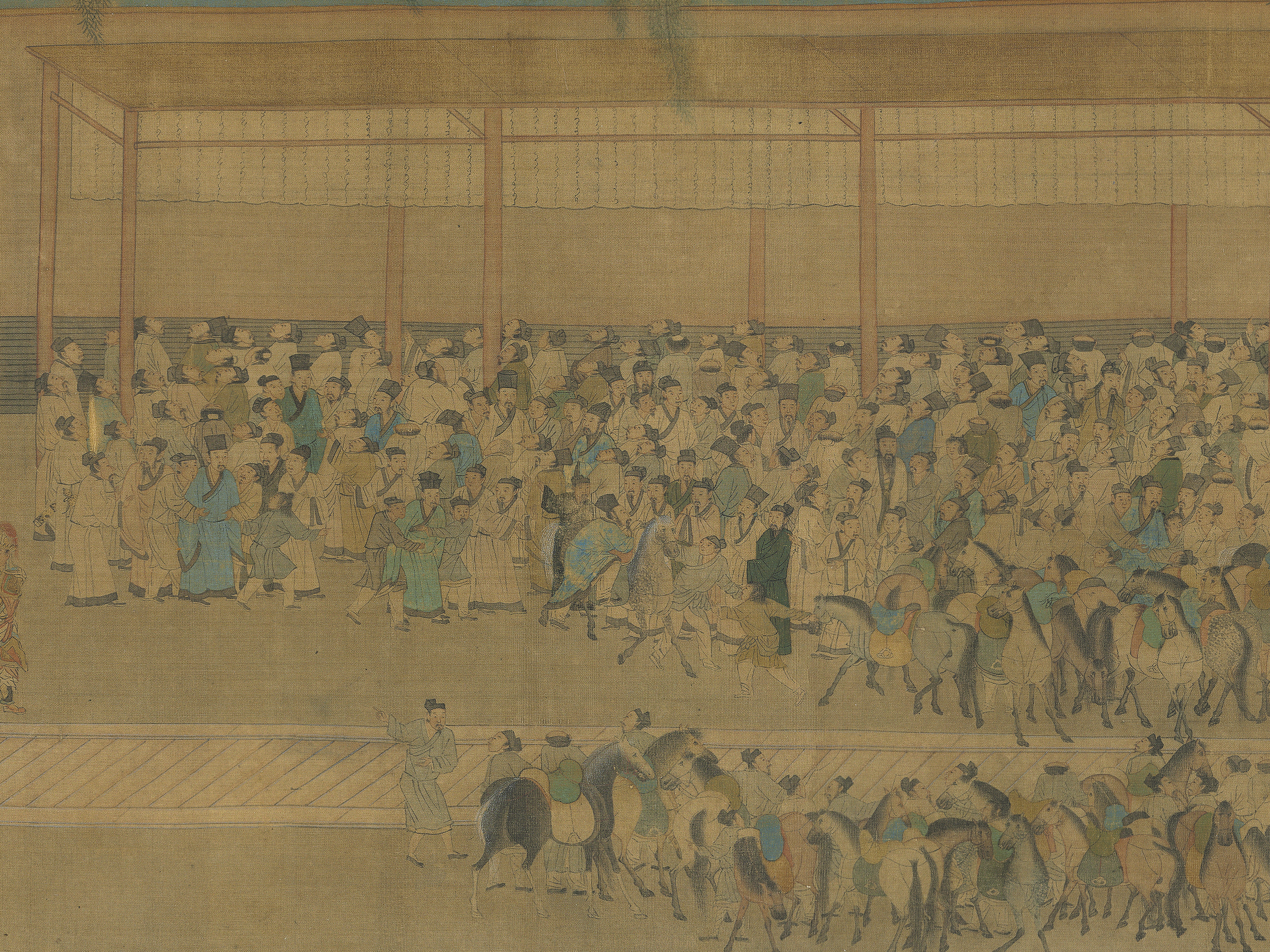|
Scholar-bureaucrats
The scholar-officials, also known as literati, scholar-gentlemen or scholar-bureaucrats (), were government officials and prestigious scholars in Chinese society, forming a distinct social class. Scholar-officials were politicians and government officials appointed by the emperor of China to perform day-to-day political duties from the Han dynasty to the end of the Qing dynasty in 1912, China's last imperial dynasty. After the Sui dynasty these officials mostly came from the Landed gentry in China, scholar-gentry (紳士 ''shēnshì'') who had earned academic degrees (such as ''xiucai'', ''juren'', or ''Jinshi (imperial examination), jinshi'') by passing the imperial examinations. Scholar-officials were the elite class of imperial China. They were highly educated, especially in literature and the arts, including calligraphy and Confucianism, Confucian texts. They dominated the government administration and local life of China until the early 20th century. Origins and formations ... [...More Info...] [...Related Items...] OR: [Wikipedia] [Google] [Baidu] [Amazon] |
Imperial Examination
The imperial examination was a civil service examination system in History of China#Imperial China, Imperial China administered for the purpose of selecting candidates for the Civil service#China, state bureaucracy. The concept of choosing bureaucrats by merit rather than by birth started Imperial examination in Chinese mythology, early in Chinese history, but using written examinations as a tool of selection started in earnest during the Sui dynasty (581–618), then into the Tang dynasty (618–907). The system became dominant during the Song dynasty (960–1279) and lasted for almost a millennium until its abolition during the late Qing reforms, late Qing dynasty reforms in 1905. The key sponsors for abolition were Yuan Shikai, Yin Chang and Zhang Zhidong. Aspects of the imperial examination still exist for entry into the civil service of both China and Taiwan. The exams served to ensure a common knowledge of writing, Chinese classics, and literary style among state officials. ... [...More Info...] [...Related Items...] OR: [Wikipedia] [Google] [Baidu] [Amazon] |
Ming Dynasty
The Ming dynasty, officially the Great Ming, was an Dynasties of China, imperial dynasty of China that ruled from 1368 to 1644, following the collapse of the Mongol Empire, Mongol-led Yuan dynasty. The Ming was the last imperial dynasty of China ruled by the Han people, the majority ethnic group in China. Although the primary capital of Beijing fell in 1644 to a rebellion led by Li Zicheng (who established the short-lived Shun dynasty), numerous rump state, rump regimes ruled by remnants of the House of Zhu, Ming imperial family, collectively called the Southern Ming, survived until 1662. The Ming dynasty's founder, the Hongwu Emperor (1368–1398), attempted to create a society of self-sufficient rural communities ordered in a rigid, immobile system that would guarantee and support a permanent class of soldiers for his dynasty: the empire's standing army exceeded one million troops and the naval history of China, navy's dockyards in Nanjing were the largest in the world. H ... [...More Info...] [...Related Items...] OR: [Wikipedia] [Google] [Baidu] [Amazon] |
Four Occupations
The four occupations (), or "four categories of the people" (),Hansson, pp. 20-21Brook, 72. was an occupation classification used in ancient China by either Confucian or Legalist scholars as far back as the late Zhou dynasty and is considered a central part of the fengjian social structure (c. 1046–256 BC).Fairbank, 108. These were the '' shi'' (warrior nobles, and later on gentry scholars), the '' nong'' (peasant farmers), the ''gong'' (artisans and craftsmen), and the '' shang'' (merchants and traders). The four occupations were not always arranged in this order. The four categories were not socioeconomic classes; wealth and standing did not correspond to these categories, nor were they hereditary. The system did not factor in all social groups present in premodern Chinese society, and its broad categories were more an idealization than a practical reality. The commercialization of Chinese society in the Song and Ming periods further blurred the lines between these four oc ... [...More Info...] [...Related Items...] OR: [Wikipedia] [Google] [Baidu] [Amazon] |
Buddhism
Buddhism, also known as Buddhadharma and Dharmavinaya, is an Indian religion and List of philosophies, philosophical tradition based on Pre-sectarian Buddhism, teachings attributed to the Buddha, a wandering teacher who lived in the 6th or 5th century Before the Common Era, BCE. It is the Major religious groups, world's fourth-largest religion, with about 500 million followers, known as Buddhists, who comprise four percent of the global population. It arose in the eastern Gangetic plain as a movement in the 5th century BCE, and gradually spread throughout much of Asia. Buddhism has subsequently played a major role in Asian culture and spirituality, eventually spreading to Western world, the West in the 20th century. According to tradition, the Buddha instructed his followers in a path of bhavana, development which leads to Enlightenment in Buddhism, awakening and moksha, full liberation from ''Duḥkha, dukkha'' (). He regarded this path as a Middle Way between extremes su ... [...More Info...] [...Related Items...] OR: [Wikipedia] [Google] [Baidu] [Amazon] |
Neo-Confucianism
Neo-Confucianism (, often shortened to ''lǐxué'' 理學, literally "School of Principle") is a moral, ethical, and metaphysical Chinese philosophy influenced by Confucianism, which originated with Han Yu (768–824) and Li Ao (772–841) in the Tang dynasty, and became prominent during the Song and Ming dynasties under the formulations of Zhu Xi (1130–1200). After the Mongol conquest of China in the thirteenth century, Chinese scholars and officials restored and preserved neo-Confucianism as a way to safeguard the cultural heritage of China. Neo-Confucianism could have been an attempt to create a more rationalist and secular form of Confucianism by rejecting mystical elements of Taoism and Buddhism that had influenced Confucianism during and after the Han dynasty. Although the neo-Confucianists were critical of Taoism and Buddhism, the two did have an influence on the philosophy, and the neo-Confucianists borrowed terms and concepts. However, unlike the Buddhists and Tao ... [...More Info...] [...Related Items...] OR: [Wikipedia] [Google] [Baidu] [Amazon] |
Nine-rank System
The nine-rank system, also known as the nine-grade controller system, was used to categorize and classify government officials by rank in Imperial China. Their accorded rank signified their status in the government hierarchy and the amount of wages they earned. Created by the politician Chen Qun in the state of Cao Wei during the Three Kingdoms, it was used until the Song dynasty, and similar ranking systems were also present in the Ming dynasty and Qing dynasty. A similar system was also used in Korea. In Japan, the Twelve Level Cap and Rank System was adopted in 603 during the reign of Empress Suiko. History Background Prior to the nine-rank system, official positions were denoted by their salary paid in number of bushels of grain. For example, during the Han dynasty, the highest-ranking officials were classed as ''wandan'' (萬石), meaning ten thousand bushels, and were paid 350 bushels of grain per month. The lowest ranking petty subofficials were paid in pecks, worth le ... [...More Info...] [...Related Items...] OR: [Wikipedia] [Google] [Baidu] [Amazon] |
Portrait Of Jiang Shunfu
A portrait is a painting, photograph, sculpture, or other artistic representation of a person, in which the face is always predominant. In arts, a portrait may be represented as half body and even full body. If the subject in full body better represents personality and mood, this type of presentation may be chosen. The intent is to display the likeness, personality, and even the mood of the person. For this reason, in photography a portrait is generally not a snapshot, but a composed image of a person in a still position. A portrait often shows a person looking directly at the painter or photographer, to most successfully engage the subject with the viewer, but portrait may be represented as a profile (from aside) and 3/4. History Prehistorical portraiture Plastered human skulls were reconstructed human skulls that were made in the ancient Levant between 9000 and 6000 BC in the Pre-Pottery Neolithic B period. They represent some of the oldest forms of art in the Middle Eas ... [...More Info...] [...Related Items...] OR: [Wikipedia] [Google] [Baidu] [Amazon] |
Confucian Scholars Of Wu Family Shrines, Tracing From Jinshisuo CADAL09010673 金石索(九)2
Confucianism, also known as Ruism or Ru classicism, is a system of thought and behavior originating in ancient China, and is variously described as a tradition, philosophy, religion, theory of government, or way of life. Founded by Confucius in the Hundred Schools of Thought era (c. 500 BCE), Confucianism integrates philosophy, ethics, and social governance, with a core focus on virtue, social harmony, and familial responsibility. Confucianism emphasizes virtue through self-cultivation and communal effort. Key virtues include '' ren'' (benevolence), '' yi'' (righteousness), '' li'' (propriety), '' zhi'' (wisdom), and '' xin'' (sincerity). These values, deeply tied to the notion of ''tian'' (heaven), present a worldview where human relationships and social order are manifestations of sacred moral principles.. While Confucianism does not emphasize an omnipotent deity, it upholds ''tian'' as a transcendent moral order. Confucius regarded himself as a transmitter of cultural va ... [...More Info...] [...Related Items...] OR: [Wikipedia] [Google] [Baidu] [Amazon] |
Northern And Southern Dynasties
The Northern and Southern dynasties () was a period of political division in the history of China that lasted from 420 to 589, following the tumultuous era of the Sixteen Kingdoms and the Eastern Jin dynasty. It is sometimes considered as the latter part of a longer period known as the Six Dynasties (220–589). The period featured civil war and political chaos, but was also a time of flourishing arts and culture, advancement in technology, and the spread of Mahayana Buddhism and Taoism. The period saw large-scale migration of Han people to lands south of the Yangtze. The period came to an end with the unification of China proper by Emperor Wen of the Sui dynasty. During this period, the process of sinicization accelerated among the non-Han ethnicities in the north and among the indigenous peoples in the south. This process was also accompanied by the increasing popularity of Buddhism in both northern and southern China and Daoism gaining influence as well, with t ... [...More Info...] [...Related Items...] OR: [Wikipedia] [Google] [Baidu] [Amazon] |
Zheng Clan Of Xingyang
The Zheng clan of Xingyang () was a prominent Chinese clan, chiefly based around Xingyang county (modern day Kaifeng, Henan). Tracing their origins to the rulers of the State of Zheng, they became highly prominent in government during the Northern and Southern dynasties, where they became one of the "Four Clans" in Northern Wei, and also during the Tang dynasty. History The Zheng clan of Xingyang traces its descent to the fall of the State of Zheng to the State of Han in 375 BC. The clan was first established in Xingyang county by , son of , a general who served under Xiang Yu. Northern and Southern dynasties The Zheng clan first became prominent in the Northern and Southern dynasties period as officials in Northern Wei, beginning with Zheng Xi (426–492). Throughout the period, they engaged in intermarriage with other major clans, as well as with the ruling Tuoba clan. Alongside the Cui clan of Boling, the Lu clan of Fanyang and the Wang clan of Taiyuan, the Zhengs wer ... [...More Info...] [...Related Items...] OR: [Wikipedia] [Google] [Baidu] [Amazon] |









